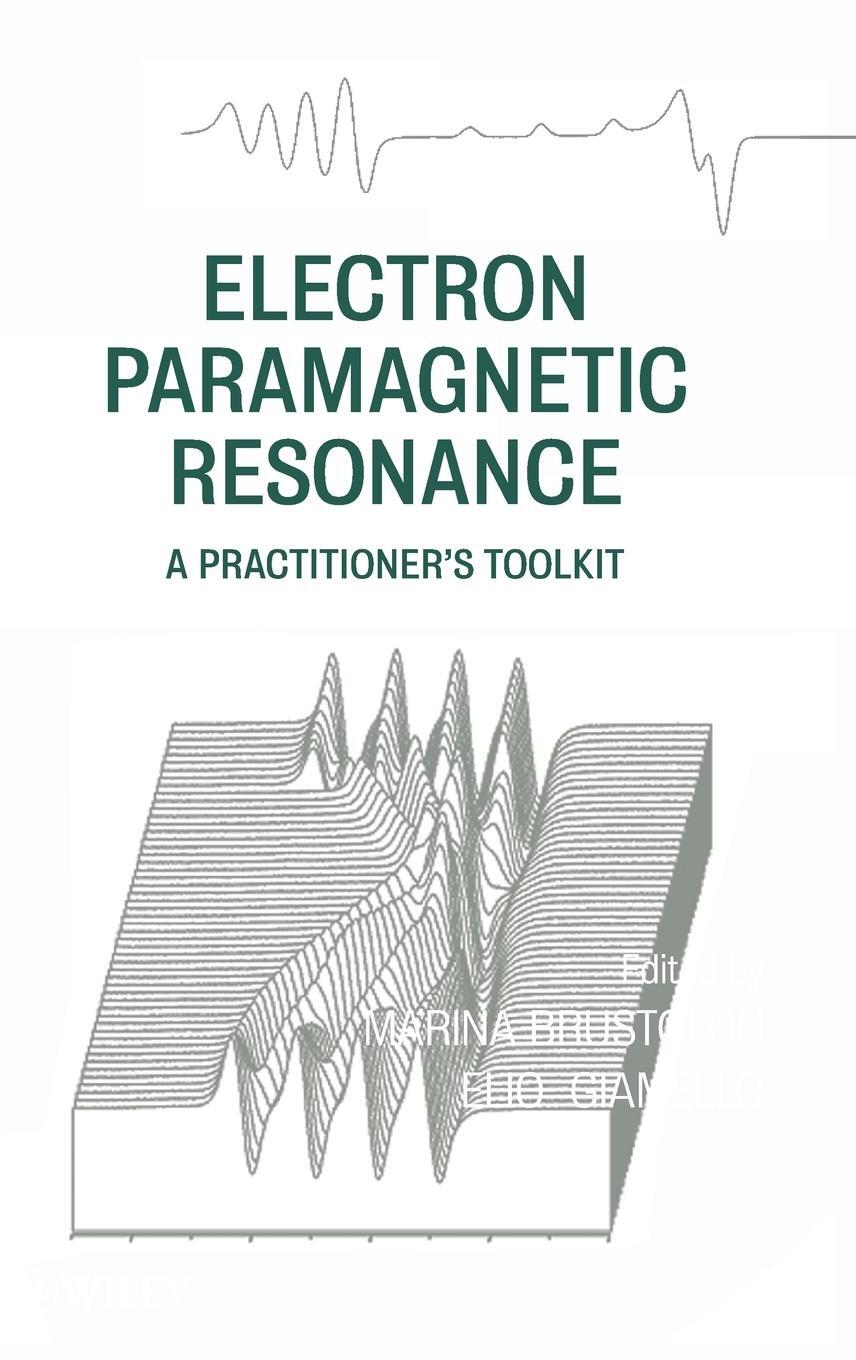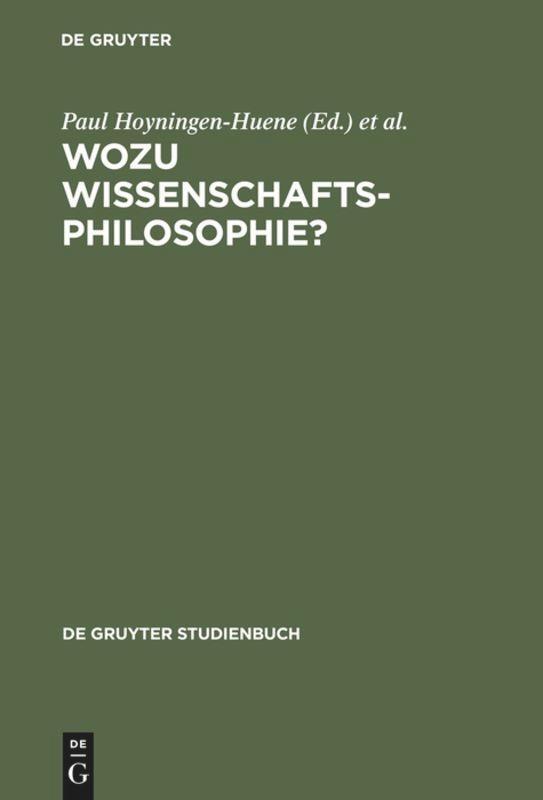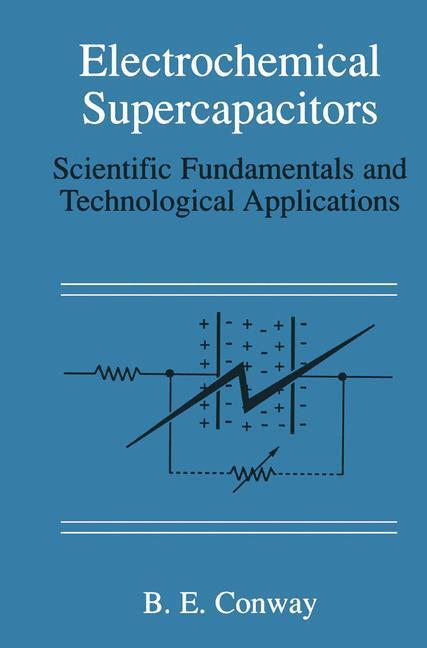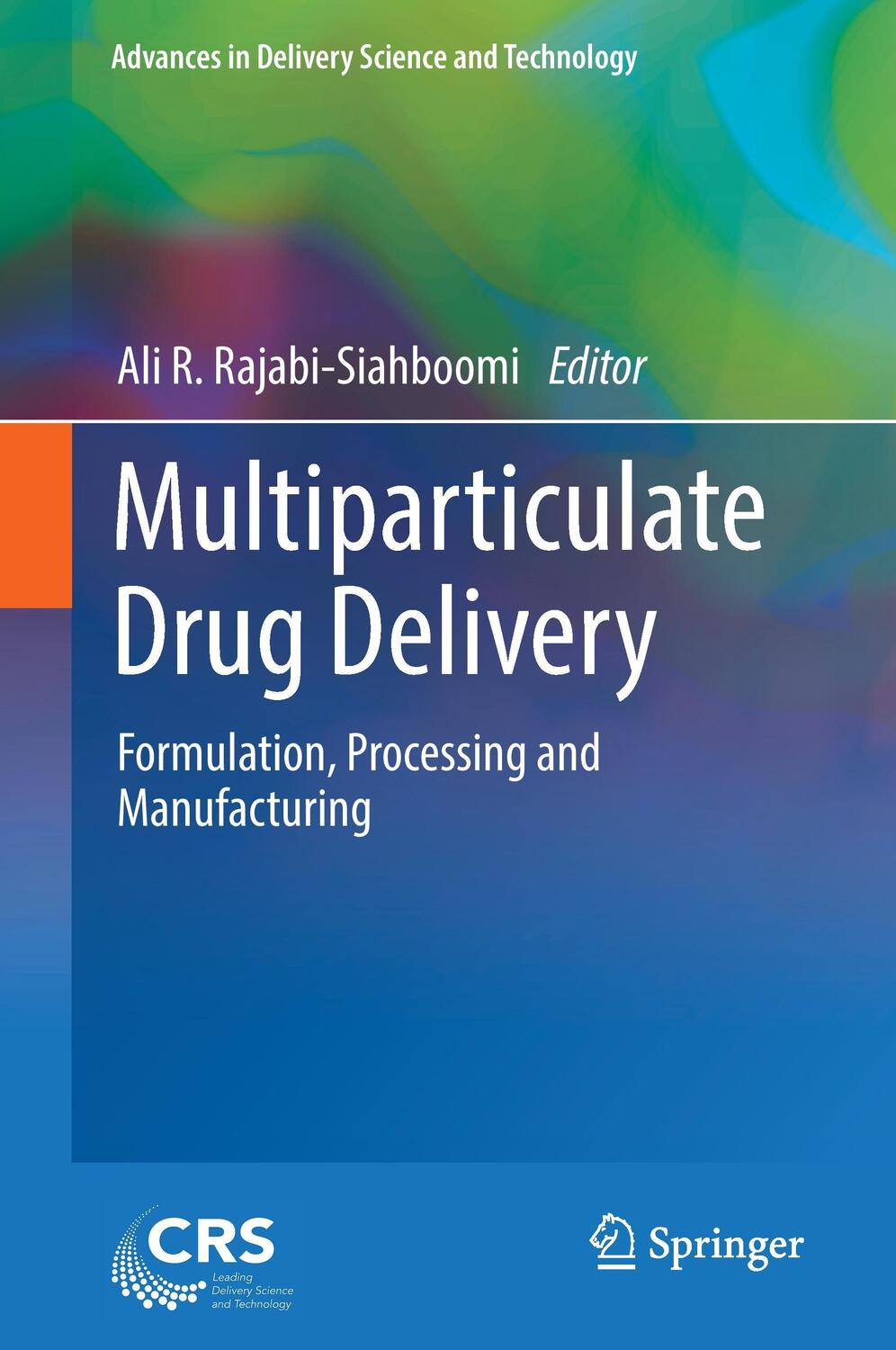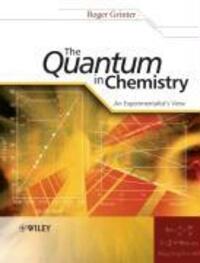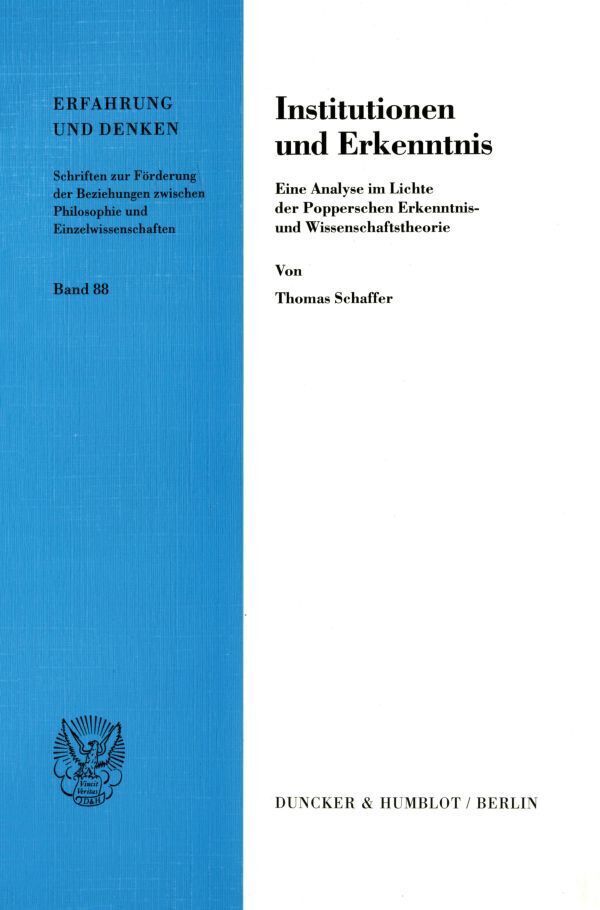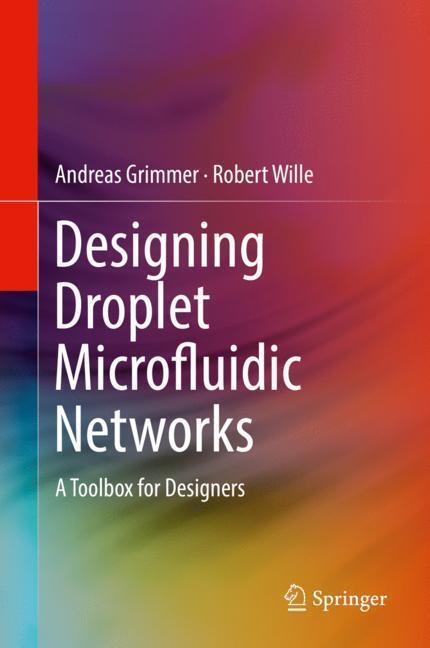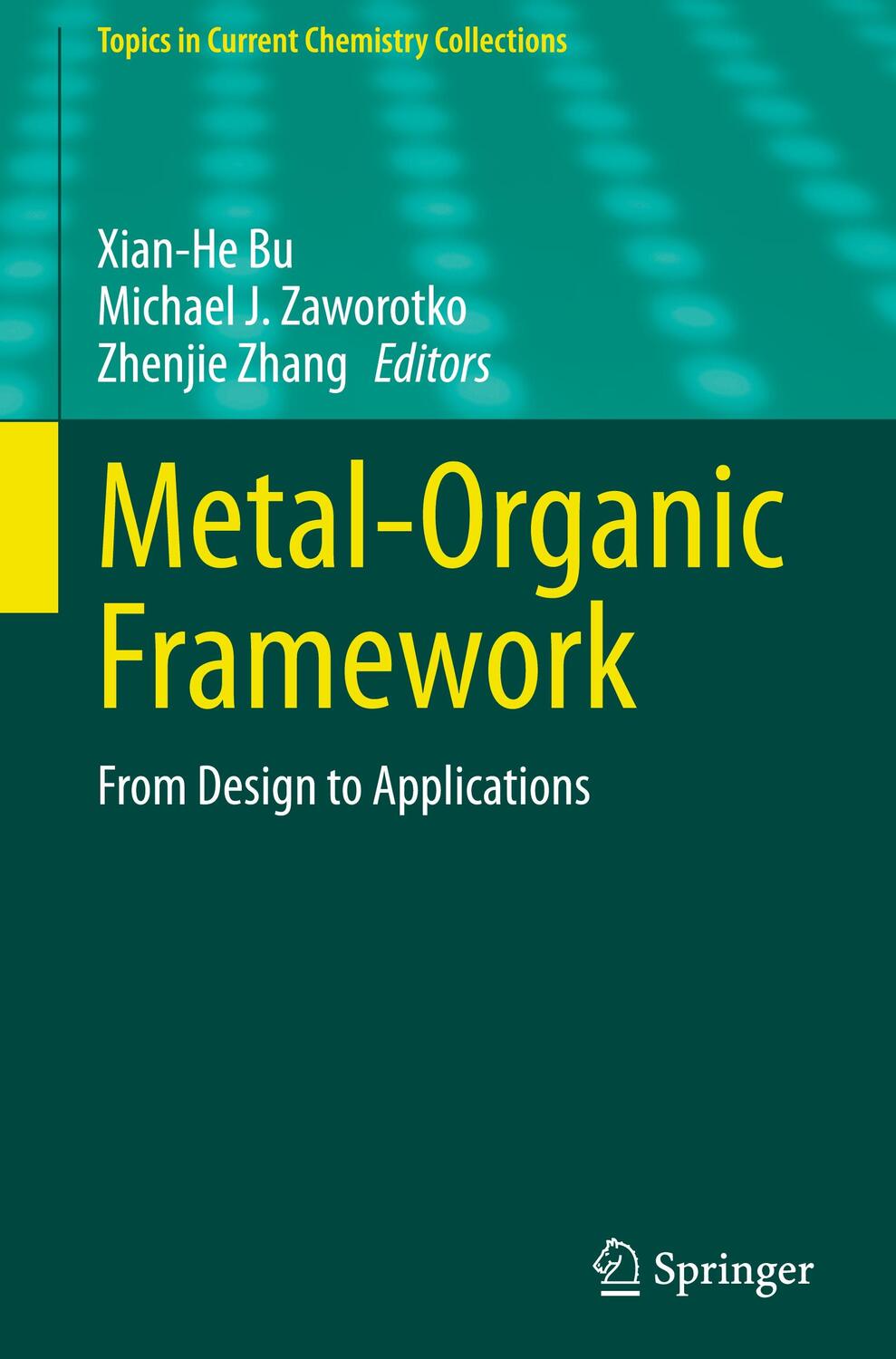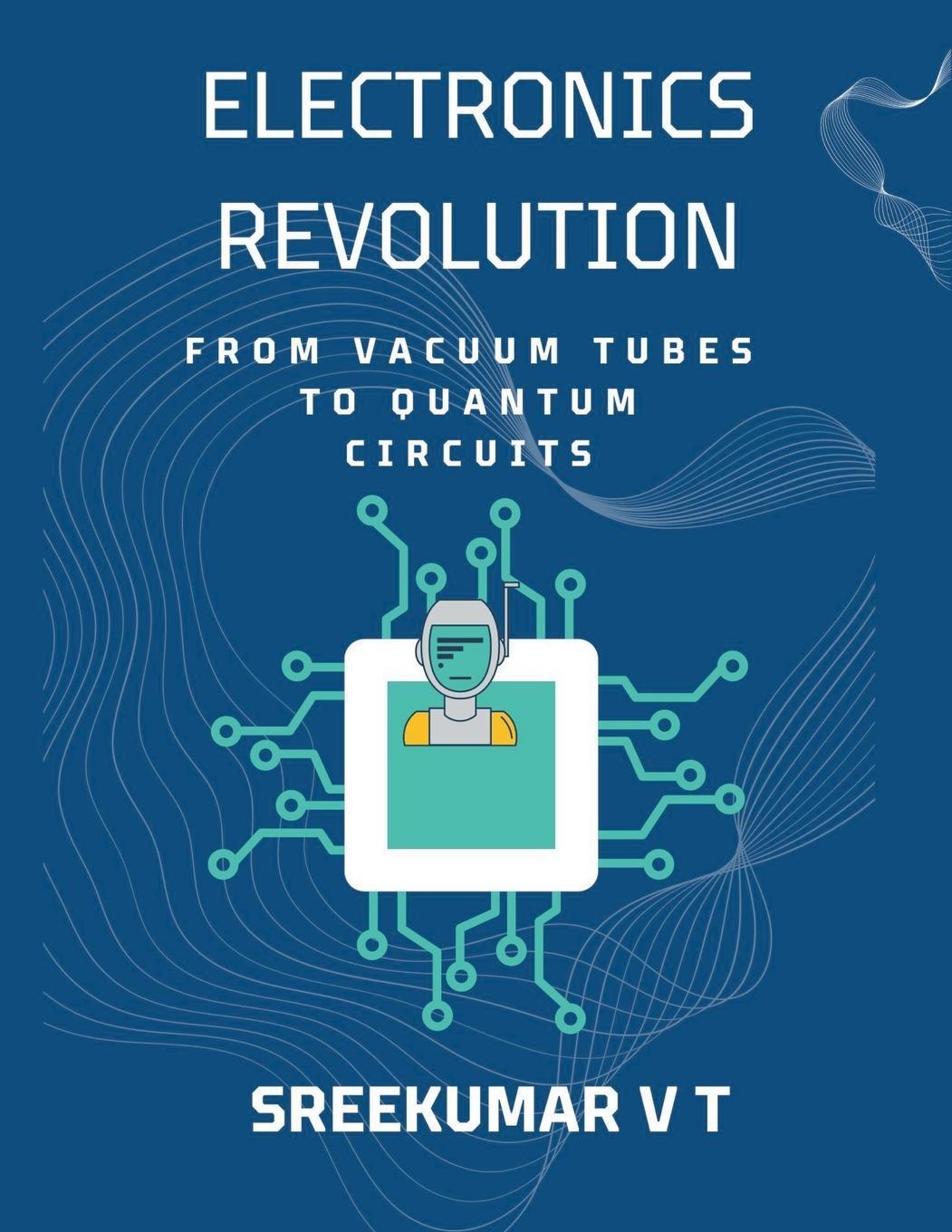Dekorationsartikel gehören nicht zum Leistungsumfang.
Sprache:
Englisch
180,50 €*
Versandkostenfrei per Post / DHL
Aktuell nicht verfügbar
Kategorien:
Beschreibung
This book offers a pragmatic guide to navigating through the complex maze of EPR/ESR spectroscopy fundamentals, techniques, and applications. Written for the scientist who is new to EPR spectroscopy, the editors have prepared a volume that de-mystifies the basic fundamentals without weighting readers down with detailed physics and mathematics, and then presents clear approaches in specific application areas. The first part presents basic fundamentals and advantages of electron paramagnetic resonance spectrscopy. The second part explores severalapplication areas including chemistry, biology, medicine, materials and geology. A frequently-asked-questions sections focuses on practicalquestions, such as the size of sample, etc. It's an ideal, hands-on reference for chemists and researchers in the pharmaceutical and materials (semiconductor) industries who are looking for a basic introduction to EPR spectroscopy.
This book offers a pragmatic guide to navigating through the complex maze of EPR/ESR spectroscopy fundamentals, techniques, and applications. Written for the scientist who is new to EPR spectroscopy, the editors have prepared a volume that de-mystifies the basic fundamentals without weighting readers down with detailed physics and mathematics, and then presents clear approaches in specific application areas. The first part presents basic fundamentals and advantages of electron paramagnetic resonance spectrscopy. The second part explores severalapplication areas including chemistry, biology, medicine, materials and geology. A frequently-asked-questions sections focuses on practicalquestions, such as the size of sample, etc. It's an ideal, hands-on reference for chemists and researchers in the pharmaceutical and materials (semiconductor) industries who are looking for a basic introduction to EPR spectroscopy.
Über den Autor
Marina Brustolon is a full professor in physical chemistry at the Università degli Studi di Padova in Italy.
Elio Giamello is a full professor in inorganic chemistry at the Università degli Studi di Torino in Italy.
Elio Giamello is a full professor in inorganic chemistry at the Università degli Studi di Torino in Italy.
Inhaltsverzeichnis
Foreword.
Preface.
Contributors.
PART I: Principles.
Chapter 1: Introduction to Electron Paramagnetic Resonance (Carlo Corvaja).
1.1 Chapter Summary.
1.2 EPR Spectrum: What Is It?
1.3 The Electron Spin.
1.4 Electron Spin in a Magnetic Field (Zeeman Effect).
1.5 Effects of Electromagnetic Fields.
1.6 Macroscopic Collection of Electron Spins.
1.7 Observation of Magnetic Resonance.
1.8 Electron Spin in Atoms or Molecules.
1.9 Macroscopic Magnetization.
1.10 Spin Relaxation and Bloch Equations.
1.11 Nuclear Spins.
1.12 Anisotropy of the Hyperfine Interaction.
1.13 ENDOR.
1.14 Two Interacting Electron Spins.
1.15 Quantum Machinery.
1.16 Electron Spin in a Static Magnetic Field.
1.17 Electron Spin Coupled to a Nuclear Spin.
1.18 Electron Spin in a Zeeman Magnetic Field in the Presence of a Microwave Field.
Chapter 2: Basic Experimental Methods in Continuous Wave Electron Paramagnetic Resonance (Peter Höfer).
2.1 Instrumental Components of a Continuous Electron Paramagnetic Resonance (CW-EPR) Spectrometer.
2.2 Experimental Techniques.
Chapter 3: What can be studied with Electron Paramagnetic Resonance? (Marina Brustolon).
3.1 Introduction.
3.2 Organic Radicals.
3.3 Organic Molecules with More than One Unpaired Electron.
3.4 Inorganic Radicals, Small Paramagnetic Molecules, and Isolated Atoms.
3.5 Transition Metal Ions.
3.6 Natural Systems and Processes.
3.7 Tailoring and assembling Paramagnetic Species for Magnetic Materials.
3.8 Industrial Applications of EPR.
Chapter 4: Electron Paramagnetic Resonance Spectroscopy in the Liquid Phase (Georg Gescheidt).
4.1 General Considerations.
4.2 Generation of Radicals and Radical Ions.
4.3 Basic Interactions and Principles.
4.4 Patterns and Line Shapes of Fluid-Solution EPR Spectra.
4.5 Transition Metal Ions.
4.6 Biradicals.
4.7 Simulation Software.
4.8 How Fluid Solution Spectra are Analyzed.
4.9 Calculation of EPR Parameters.
4.10 Molecular Properties Mirrored by EPR Spectra in Fluid Solution.
4.11 Chemically Induced Dynamic Electron Polarization (CIDEP) and CID Nuclear Polarization (CIDNP): Methods to Study Short-Lived Radicals.
4.12 References.
Chapter 5: Pulsed Electron Paramagnetic Resonance (Michael K. Bowman).
5.1 Introduction.
5.2 Vector Model for Pulsed EPR.
5.3 Pulse Sequences.
5.4. Data Analysis.
5.5. Spectrometer.
Chapter 6: Electron Paramagnetic Resonance Spectra in the Solid State (Marina Bennati and Damien M. Murphy).
6.1 Introduction.
6.2 Anisotropy of the Zeeman interaction: the g tensor.
6.3 The Hyperfine Interaction in the Solid Sstate.
6.4 TMIs.
6.5 EPR Spectra for S > 1/2: the ZFS.
Chapter 7: The Virtual Electron Paramagnetic Resonance Laboratory: A User Guide to ab initio Modeling (Vincenzo Barone and Antonino Polimeno).
7.1. Introduction.
7.2. Modeling tools.
7.3. Tutorial and Case-Studies.
7.4. Conclusions.
PART II: APPLICATIONS.
Chapter 8: Spin Trapping (Angelo Alberti and Dante Macciantelli).
8.1 What Is Spin Trapping and Why Use It.
8.2 Spin Traps.
8.3 Experimental Methods.
8.4 Applications.
8.5 Spin Trapping in the Gas Phase or in Solid State.
8.6 Availability of Spin Traps.
8.7 FAQs.
Chapter 9: Radiation Produced Radicals (Einar Sagstuen and Eli Olaug Hole).
9.1 Introduction.
9.2 Interaction of Radiation with Matter.
9.3 Qualitative Detection of DNA Radicals.
9.4 Tools and Procedures for Radical Structure eterminations.
9.5 Quantitative Detection of Radicals.
9.6 Highlighted Reading.
Chapter 10: Electron Paramagnetic Resonance in Biochemistry and Biophysics (Michael K. Bowman and Donatella Carbonera).
10.1 Introduction.
10.2 Experimental Considerations.
10.3 Dynamics.
10.4 Saturation Transfer.
10.5 Two-Dimensional Pulsed EPR.
10.6 Protein Topology and SDSL.
10.7 Surface Potentials/Accessibility and SDSL.
10.8 Oximetry.
10.9 Nanoscale Distance Measurements.
10.10 Introduction.
10.11 Oxygenic Photosynthesis.
Chapter 11: Electron Paramagnetic Resonance Detection of Radicals in Biology and Medicine (Michael J. Davies).
11.1 Free Radicals in Disease Processes.
11.2 Nature of Free Radicals Involved in Disease Processes and Potential Catalysts for Radical Formation.
11.3 Direct EPR Detection of Reactive Radicals In Vivo and Ex Vivo.
11.4 Spin Trapping of Reactive Radicals In Vivo and Ex Vivo.
11.5 Spin Scavenging of Reactive Radicals In Vivo and Ex Vivo.
11.6 Spin Trapping of Nitric Oxide.
11.7 Verification of the occurrence of radical-mediated processes.
11.8 Conclusions.
Chapter 12: Electron Paramagnetic Resonance Applications to Catalytic and Porous Materials (Daniella Goldfarb).
12.1 Introduction.
12.2 Paramagnetic TMIs.
12.3 Spin Probes.
12.4 Reaction Intermediates and Trapped Radicals.
12.5 Summary and Outlook.
12.6 References.
Chapter 13: Electron Paramagentic Resonance of Charge Carriers in Solids (Mario Chiesa and Elio Giamello).
13.1 Introduction.
13.2 Point Defects, Charge Carriers, and EPR.
13.3 Localized Electrons: Colour Centres in Ionic Solids.
13.4 Aggregate Color Centres.
13.5 Localized Holes in Ionic Solids.
13.6 Charge Carriers in Semiconductors.
13.7 CESR in Metals.
Appendix.
Subject Index.
Chemical Index.
Preface.
Contributors.
PART I: Principles.
Chapter 1: Introduction to Electron Paramagnetic Resonance (Carlo Corvaja).
1.1 Chapter Summary.
1.2 EPR Spectrum: What Is It?
1.3 The Electron Spin.
1.4 Electron Spin in a Magnetic Field (Zeeman Effect).
1.5 Effects of Electromagnetic Fields.
1.6 Macroscopic Collection of Electron Spins.
1.7 Observation of Magnetic Resonance.
1.8 Electron Spin in Atoms or Molecules.
1.9 Macroscopic Magnetization.
1.10 Spin Relaxation and Bloch Equations.
1.11 Nuclear Spins.
1.12 Anisotropy of the Hyperfine Interaction.
1.13 ENDOR.
1.14 Two Interacting Electron Spins.
1.15 Quantum Machinery.
1.16 Electron Spin in a Static Magnetic Field.
1.17 Electron Spin Coupled to a Nuclear Spin.
1.18 Electron Spin in a Zeeman Magnetic Field in the Presence of a Microwave Field.
Chapter 2: Basic Experimental Methods in Continuous Wave Electron Paramagnetic Resonance (Peter Höfer).
2.1 Instrumental Components of a Continuous Electron Paramagnetic Resonance (CW-EPR) Spectrometer.
2.2 Experimental Techniques.
Chapter 3: What can be studied with Electron Paramagnetic Resonance? (Marina Brustolon).
3.1 Introduction.
3.2 Organic Radicals.
3.3 Organic Molecules with More than One Unpaired Electron.
3.4 Inorganic Radicals, Small Paramagnetic Molecules, and Isolated Atoms.
3.5 Transition Metal Ions.
3.6 Natural Systems and Processes.
3.7 Tailoring and assembling Paramagnetic Species for Magnetic Materials.
3.8 Industrial Applications of EPR.
Chapter 4: Electron Paramagnetic Resonance Spectroscopy in the Liquid Phase (Georg Gescheidt).
4.1 General Considerations.
4.2 Generation of Radicals and Radical Ions.
4.3 Basic Interactions and Principles.
4.4 Patterns and Line Shapes of Fluid-Solution EPR Spectra.
4.5 Transition Metal Ions.
4.6 Biradicals.
4.7 Simulation Software.
4.8 How Fluid Solution Spectra are Analyzed.
4.9 Calculation of EPR Parameters.
4.10 Molecular Properties Mirrored by EPR Spectra in Fluid Solution.
4.11 Chemically Induced Dynamic Electron Polarization (CIDEP) and CID Nuclear Polarization (CIDNP): Methods to Study Short-Lived Radicals.
4.12 References.
Chapter 5: Pulsed Electron Paramagnetic Resonance (Michael K. Bowman).
5.1 Introduction.
5.2 Vector Model for Pulsed EPR.
5.3 Pulse Sequences.
5.4. Data Analysis.
5.5. Spectrometer.
Chapter 6: Electron Paramagnetic Resonance Spectra in the Solid State (Marina Bennati and Damien M. Murphy).
6.1 Introduction.
6.2 Anisotropy of the Zeeman interaction: the g tensor.
6.3 The Hyperfine Interaction in the Solid Sstate.
6.4 TMIs.
6.5 EPR Spectra for S > 1/2: the ZFS.
Chapter 7: The Virtual Electron Paramagnetic Resonance Laboratory: A User Guide to ab initio Modeling (Vincenzo Barone and Antonino Polimeno).
7.1. Introduction.
7.2. Modeling tools.
7.3. Tutorial and Case-Studies.
7.4. Conclusions.
PART II: APPLICATIONS.
Chapter 8: Spin Trapping (Angelo Alberti and Dante Macciantelli).
8.1 What Is Spin Trapping and Why Use It.
8.2 Spin Traps.
8.3 Experimental Methods.
8.4 Applications.
8.5 Spin Trapping in the Gas Phase or in Solid State.
8.6 Availability of Spin Traps.
8.7 FAQs.
Chapter 9: Radiation Produced Radicals (Einar Sagstuen and Eli Olaug Hole).
9.1 Introduction.
9.2 Interaction of Radiation with Matter.
9.3 Qualitative Detection of DNA Radicals.
9.4 Tools and Procedures for Radical Structure eterminations.
9.5 Quantitative Detection of Radicals.
9.6 Highlighted Reading.
Chapter 10: Electron Paramagnetic Resonance in Biochemistry and Biophysics (Michael K. Bowman and Donatella Carbonera).
10.1 Introduction.
10.2 Experimental Considerations.
10.3 Dynamics.
10.4 Saturation Transfer.
10.5 Two-Dimensional Pulsed EPR.
10.6 Protein Topology and SDSL.
10.7 Surface Potentials/Accessibility and SDSL.
10.8 Oximetry.
10.9 Nanoscale Distance Measurements.
10.10 Introduction.
10.11 Oxygenic Photosynthesis.
Chapter 11: Electron Paramagnetic Resonance Detection of Radicals in Biology and Medicine (Michael J. Davies).
11.1 Free Radicals in Disease Processes.
11.2 Nature of Free Radicals Involved in Disease Processes and Potential Catalysts for Radical Formation.
11.3 Direct EPR Detection of Reactive Radicals In Vivo and Ex Vivo.
11.4 Spin Trapping of Reactive Radicals In Vivo and Ex Vivo.
11.5 Spin Scavenging of Reactive Radicals In Vivo and Ex Vivo.
11.6 Spin Trapping of Nitric Oxide.
11.7 Verification of the occurrence of radical-mediated processes.
11.8 Conclusions.
Chapter 12: Electron Paramagnetic Resonance Applications to Catalytic and Porous Materials (Daniella Goldfarb).
12.1 Introduction.
12.2 Paramagnetic TMIs.
12.3 Spin Probes.
12.4 Reaction Intermediates and Trapped Radicals.
12.5 Summary and Outlook.
12.6 References.
Chapter 13: Electron Paramagentic Resonance of Charge Carriers in Solids (Mario Chiesa and Elio Giamello).
13.1 Introduction.
13.2 Point Defects, Charge Carriers, and EPR.
13.3 Localized Electrons: Colour Centres in Ionic Solids.
13.4 Aggregate Color Centres.
13.5 Localized Holes in Ionic Solids.
13.6 Charge Carriers in Semiconductors.
13.7 CESR in Metals.
Appendix.
Subject Index.
Chemical Index.
Details
| Erscheinungsjahr: | 2009 |
|---|---|
| Fachbereich: | Theoretische Chemie |
| Genre: | Chemie |
| Rubrik: | Naturwissenschaften & Technik |
| Medium: | Buch |
| Seiten: | 560 |
| Inhalt: | 560 S. |
| ISBN-13: | 9780470258828 |
| ISBN-10: | 0470258829 |
| Sprache: | Englisch |
| Einband: | Gebunden |
| Autor: | Brustolon, M. R. |
| Redaktion: |
Brustolon, Marina
Giamello, Elio |
| Herausgeber: | Marina Brustolon/Elio Giamello |
| Hersteller: |
Wiley
John Wiley & Sons |
| Maße: | 240 x 161 x 34 mm |
| Von/Mit: | Marina Brustolon (u. a.) |
| Erscheinungsdatum: | 01.02.2009 |
| Gewicht: | 1 kg |
Über den Autor
Marina Brustolon is a full professor in physical chemistry at the Università degli Studi di Padova in Italy.
Elio Giamello is a full professor in inorganic chemistry at the Università degli Studi di Torino in Italy.
Elio Giamello is a full professor in inorganic chemistry at the Università degli Studi di Torino in Italy.
Inhaltsverzeichnis
Foreword.
Preface.
Contributors.
PART I: Principles.
Chapter 1: Introduction to Electron Paramagnetic Resonance (Carlo Corvaja).
1.1 Chapter Summary.
1.2 EPR Spectrum: What Is It?
1.3 The Electron Spin.
1.4 Electron Spin in a Magnetic Field (Zeeman Effect).
1.5 Effects of Electromagnetic Fields.
1.6 Macroscopic Collection of Electron Spins.
1.7 Observation of Magnetic Resonance.
1.8 Electron Spin in Atoms or Molecules.
1.9 Macroscopic Magnetization.
1.10 Spin Relaxation and Bloch Equations.
1.11 Nuclear Spins.
1.12 Anisotropy of the Hyperfine Interaction.
1.13 ENDOR.
1.14 Two Interacting Electron Spins.
1.15 Quantum Machinery.
1.16 Electron Spin in a Static Magnetic Field.
1.17 Electron Spin Coupled to a Nuclear Spin.
1.18 Electron Spin in a Zeeman Magnetic Field in the Presence of a Microwave Field.
Chapter 2: Basic Experimental Methods in Continuous Wave Electron Paramagnetic Resonance (Peter Höfer).
2.1 Instrumental Components of a Continuous Electron Paramagnetic Resonance (CW-EPR) Spectrometer.
2.2 Experimental Techniques.
Chapter 3: What can be studied with Electron Paramagnetic Resonance? (Marina Brustolon).
3.1 Introduction.
3.2 Organic Radicals.
3.3 Organic Molecules with More than One Unpaired Electron.
3.4 Inorganic Radicals, Small Paramagnetic Molecules, and Isolated Atoms.
3.5 Transition Metal Ions.
3.6 Natural Systems and Processes.
3.7 Tailoring and assembling Paramagnetic Species for Magnetic Materials.
3.8 Industrial Applications of EPR.
Chapter 4: Electron Paramagnetic Resonance Spectroscopy in the Liquid Phase (Georg Gescheidt).
4.1 General Considerations.
4.2 Generation of Radicals and Radical Ions.
4.3 Basic Interactions and Principles.
4.4 Patterns and Line Shapes of Fluid-Solution EPR Spectra.
4.5 Transition Metal Ions.
4.6 Biradicals.
4.7 Simulation Software.
4.8 How Fluid Solution Spectra are Analyzed.
4.9 Calculation of EPR Parameters.
4.10 Molecular Properties Mirrored by EPR Spectra in Fluid Solution.
4.11 Chemically Induced Dynamic Electron Polarization (CIDEP) and CID Nuclear Polarization (CIDNP): Methods to Study Short-Lived Radicals.
4.12 References.
Chapter 5: Pulsed Electron Paramagnetic Resonance (Michael K. Bowman).
5.1 Introduction.
5.2 Vector Model for Pulsed EPR.
5.3 Pulse Sequences.
5.4. Data Analysis.
5.5. Spectrometer.
Chapter 6: Electron Paramagnetic Resonance Spectra in the Solid State (Marina Bennati and Damien M. Murphy).
6.1 Introduction.
6.2 Anisotropy of the Zeeman interaction: the g tensor.
6.3 The Hyperfine Interaction in the Solid Sstate.
6.4 TMIs.
6.5 EPR Spectra for S > 1/2: the ZFS.
Chapter 7: The Virtual Electron Paramagnetic Resonance Laboratory: A User Guide to ab initio Modeling (Vincenzo Barone and Antonino Polimeno).
7.1. Introduction.
7.2. Modeling tools.
7.3. Tutorial and Case-Studies.
7.4. Conclusions.
PART II: APPLICATIONS.
Chapter 8: Spin Trapping (Angelo Alberti and Dante Macciantelli).
8.1 What Is Spin Trapping and Why Use It.
8.2 Spin Traps.
8.3 Experimental Methods.
8.4 Applications.
8.5 Spin Trapping in the Gas Phase or in Solid State.
8.6 Availability of Spin Traps.
8.7 FAQs.
Chapter 9: Radiation Produced Radicals (Einar Sagstuen and Eli Olaug Hole).
9.1 Introduction.
9.2 Interaction of Radiation with Matter.
9.3 Qualitative Detection of DNA Radicals.
9.4 Tools and Procedures for Radical Structure eterminations.
9.5 Quantitative Detection of Radicals.
9.6 Highlighted Reading.
Chapter 10: Electron Paramagnetic Resonance in Biochemistry and Biophysics (Michael K. Bowman and Donatella Carbonera).
10.1 Introduction.
10.2 Experimental Considerations.
10.3 Dynamics.
10.4 Saturation Transfer.
10.5 Two-Dimensional Pulsed EPR.
10.6 Protein Topology and SDSL.
10.7 Surface Potentials/Accessibility and SDSL.
10.8 Oximetry.
10.9 Nanoscale Distance Measurements.
10.10 Introduction.
10.11 Oxygenic Photosynthesis.
Chapter 11: Electron Paramagnetic Resonance Detection of Radicals in Biology and Medicine (Michael J. Davies).
11.1 Free Radicals in Disease Processes.
11.2 Nature of Free Radicals Involved in Disease Processes and Potential Catalysts for Radical Formation.
11.3 Direct EPR Detection of Reactive Radicals In Vivo and Ex Vivo.
11.4 Spin Trapping of Reactive Radicals In Vivo and Ex Vivo.
11.5 Spin Scavenging of Reactive Radicals In Vivo and Ex Vivo.
11.6 Spin Trapping of Nitric Oxide.
11.7 Verification of the occurrence of radical-mediated processes.
11.8 Conclusions.
Chapter 12: Electron Paramagnetic Resonance Applications to Catalytic and Porous Materials (Daniella Goldfarb).
12.1 Introduction.
12.2 Paramagnetic TMIs.
12.3 Spin Probes.
12.4 Reaction Intermediates and Trapped Radicals.
12.5 Summary and Outlook.
12.6 References.
Chapter 13: Electron Paramagentic Resonance of Charge Carriers in Solids (Mario Chiesa and Elio Giamello).
13.1 Introduction.
13.2 Point Defects, Charge Carriers, and EPR.
13.3 Localized Electrons: Colour Centres in Ionic Solids.
13.4 Aggregate Color Centres.
13.5 Localized Holes in Ionic Solids.
13.6 Charge Carriers in Semiconductors.
13.7 CESR in Metals.
Appendix.
Subject Index.
Chemical Index.
Preface.
Contributors.
PART I: Principles.
Chapter 1: Introduction to Electron Paramagnetic Resonance (Carlo Corvaja).
1.1 Chapter Summary.
1.2 EPR Spectrum: What Is It?
1.3 The Electron Spin.
1.4 Electron Spin in a Magnetic Field (Zeeman Effect).
1.5 Effects of Electromagnetic Fields.
1.6 Macroscopic Collection of Electron Spins.
1.7 Observation of Magnetic Resonance.
1.8 Electron Spin in Atoms or Molecules.
1.9 Macroscopic Magnetization.
1.10 Spin Relaxation and Bloch Equations.
1.11 Nuclear Spins.
1.12 Anisotropy of the Hyperfine Interaction.
1.13 ENDOR.
1.14 Two Interacting Electron Spins.
1.15 Quantum Machinery.
1.16 Electron Spin in a Static Magnetic Field.
1.17 Electron Spin Coupled to a Nuclear Spin.
1.18 Electron Spin in a Zeeman Magnetic Field in the Presence of a Microwave Field.
Chapter 2: Basic Experimental Methods in Continuous Wave Electron Paramagnetic Resonance (Peter Höfer).
2.1 Instrumental Components of a Continuous Electron Paramagnetic Resonance (CW-EPR) Spectrometer.
2.2 Experimental Techniques.
Chapter 3: What can be studied with Electron Paramagnetic Resonance? (Marina Brustolon).
3.1 Introduction.
3.2 Organic Radicals.
3.3 Organic Molecules with More than One Unpaired Electron.
3.4 Inorganic Radicals, Small Paramagnetic Molecules, and Isolated Atoms.
3.5 Transition Metal Ions.
3.6 Natural Systems and Processes.
3.7 Tailoring and assembling Paramagnetic Species for Magnetic Materials.
3.8 Industrial Applications of EPR.
Chapter 4: Electron Paramagnetic Resonance Spectroscopy in the Liquid Phase (Georg Gescheidt).
4.1 General Considerations.
4.2 Generation of Radicals and Radical Ions.
4.3 Basic Interactions and Principles.
4.4 Patterns and Line Shapes of Fluid-Solution EPR Spectra.
4.5 Transition Metal Ions.
4.6 Biradicals.
4.7 Simulation Software.
4.8 How Fluid Solution Spectra are Analyzed.
4.9 Calculation of EPR Parameters.
4.10 Molecular Properties Mirrored by EPR Spectra in Fluid Solution.
4.11 Chemically Induced Dynamic Electron Polarization (CIDEP) and CID Nuclear Polarization (CIDNP): Methods to Study Short-Lived Radicals.
4.12 References.
Chapter 5: Pulsed Electron Paramagnetic Resonance (Michael K. Bowman).
5.1 Introduction.
5.2 Vector Model for Pulsed EPR.
5.3 Pulse Sequences.
5.4. Data Analysis.
5.5. Spectrometer.
Chapter 6: Electron Paramagnetic Resonance Spectra in the Solid State (Marina Bennati and Damien M. Murphy).
6.1 Introduction.
6.2 Anisotropy of the Zeeman interaction: the g tensor.
6.3 The Hyperfine Interaction in the Solid Sstate.
6.4 TMIs.
6.5 EPR Spectra for S > 1/2: the ZFS.
Chapter 7: The Virtual Electron Paramagnetic Resonance Laboratory: A User Guide to ab initio Modeling (Vincenzo Barone and Antonino Polimeno).
7.1. Introduction.
7.2. Modeling tools.
7.3. Tutorial and Case-Studies.
7.4. Conclusions.
PART II: APPLICATIONS.
Chapter 8: Spin Trapping (Angelo Alberti and Dante Macciantelli).
8.1 What Is Spin Trapping and Why Use It.
8.2 Spin Traps.
8.3 Experimental Methods.
8.4 Applications.
8.5 Spin Trapping in the Gas Phase or in Solid State.
8.6 Availability of Spin Traps.
8.7 FAQs.
Chapter 9: Radiation Produced Radicals (Einar Sagstuen and Eli Olaug Hole).
9.1 Introduction.
9.2 Interaction of Radiation with Matter.
9.3 Qualitative Detection of DNA Radicals.
9.4 Tools and Procedures for Radical Structure eterminations.
9.5 Quantitative Detection of Radicals.
9.6 Highlighted Reading.
Chapter 10: Electron Paramagnetic Resonance in Biochemistry and Biophysics (Michael K. Bowman and Donatella Carbonera).
10.1 Introduction.
10.2 Experimental Considerations.
10.3 Dynamics.
10.4 Saturation Transfer.
10.5 Two-Dimensional Pulsed EPR.
10.6 Protein Topology and SDSL.
10.7 Surface Potentials/Accessibility and SDSL.
10.8 Oximetry.
10.9 Nanoscale Distance Measurements.
10.10 Introduction.
10.11 Oxygenic Photosynthesis.
Chapter 11: Electron Paramagnetic Resonance Detection of Radicals in Biology and Medicine (Michael J. Davies).
11.1 Free Radicals in Disease Processes.
11.2 Nature of Free Radicals Involved in Disease Processes and Potential Catalysts for Radical Formation.
11.3 Direct EPR Detection of Reactive Radicals In Vivo and Ex Vivo.
11.4 Spin Trapping of Reactive Radicals In Vivo and Ex Vivo.
11.5 Spin Scavenging of Reactive Radicals In Vivo and Ex Vivo.
11.6 Spin Trapping of Nitric Oxide.
11.7 Verification of the occurrence of radical-mediated processes.
11.8 Conclusions.
Chapter 12: Electron Paramagnetic Resonance Applications to Catalytic and Porous Materials (Daniella Goldfarb).
12.1 Introduction.
12.2 Paramagnetic TMIs.
12.3 Spin Probes.
12.4 Reaction Intermediates and Trapped Radicals.
12.5 Summary and Outlook.
12.6 References.
Chapter 13: Electron Paramagentic Resonance of Charge Carriers in Solids (Mario Chiesa and Elio Giamello).
13.1 Introduction.
13.2 Point Defects, Charge Carriers, and EPR.
13.3 Localized Electrons: Colour Centres in Ionic Solids.
13.4 Aggregate Color Centres.
13.5 Localized Holes in Ionic Solids.
13.6 Charge Carriers in Semiconductors.
13.7 CESR in Metals.
Appendix.
Subject Index.
Chemical Index.
Details
| Erscheinungsjahr: | 2009 |
|---|---|
| Fachbereich: | Theoretische Chemie |
| Genre: | Chemie |
| Rubrik: | Naturwissenschaften & Technik |
| Medium: | Buch |
| Seiten: | 560 |
| Inhalt: | 560 S. |
| ISBN-13: | 9780470258828 |
| ISBN-10: | 0470258829 |
| Sprache: | Englisch |
| Einband: | Gebunden |
| Autor: | Brustolon, M. R. |
| Redaktion: |
Brustolon, Marina
Giamello, Elio |
| Herausgeber: | Marina Brustolon/Elio Giamello |
| Hersteller: |
Wiley
John Wiley & Sons |
| Maße: | 240 x 161 x 34 mm |
| Von/Mit: | Marina Brustolon (u. a.) |
| Erscheinungsdatum: | 01.02.2009 |
| Gewicht: | 1 kg |
Warnhinweis

